- Home
- William Kennedy
Riding the Yellow Trolley Car: Selected Nonfiction Page 15
Riding the Yellow Trolley Car: Selected Nonfiction Read online
Page 15
“There’s always driblets coming in.”
“City Lights pays once a year.”
“I get more from my readings, from one thousand to two thousand dollars, unless I do it cheaper for a smaller school.”
(He could ask for more, and probably get it, but doesn’t. Why doesn’t he?)
“If they had to give me more it means they would not be able to do more that season, like get Eldridge Cleaver.…”
VIII
A Poem Is Born
“… also it gets like a state visit. They think if they’re spending that much money that they’re entertaining the King of Siam. And the day gets formal.…”
IX
A Pause
(To define terms for subsequent clarity)
Microprosopus: From Chapter 25, The Wisdom of the Kaballah: “A human-formed appearance of the Holy of Holy Ones, the Concealed one of All.”
Microprosopus: From Ginsberg: “The name of the human manifestation in the image of the formless, unknown god, very self righteous.”
X
The Ginsberg-Spoken Poem Begins
Then they want you to come in spats, in a helicopter, an ambulance, with a bodyguard,
They want you to meet the basketball team and have press conferences and batteries of microphones and TV cameras
Whether you like it or not.
And you’re not allowed to get (loved)
And you have to have a prepared speech.
Above $4,000 you have to bring Bob Dylan as accompanist.
Above $6,000 you have to get Shea Stadium and worry about assassination.
Over $10,000 you have to be assassinated by a black bullet
in red and blue spotlight
by a militant ex-Catholic homosexual
who wants to draw attention quite justly
to the starving Biafran Arabs
upon whom the Israelis
are inflicting
physical pain.
So—since I just got ten grand from the Arab League
To play the Mosque in Jerusalem.
I hereby announce the Israelis have trespassed the bounds of the Unknown Gods
And that Jehovah is an egotist
inflicting cruel and mortal pain
on Palestinian refugees.
I’ve gone too far.
Stop.
Yes, stop. Everyone’s gone too far.
I’ve been thinking about this. This may be where it all begins. Where the earth blows up.
Earth may enter its climactic seizure of grief and
self pity
and blow itself up out of sheer spite
of its long, semitic nose.
They’re both semites.
They’re all worshipping an implacable
Microprosopus,
a thoroughly evil creation of the human brain,
that jealous god.
His egotism continually leads to quarreling
and disputation
over the justice of his nose.
XI
Title of the Poem
“Pain In Albany, Pain In Northwest Jordan, Pain In Holy Land.”
1968
Where Did They Go? Everywhere.
I just read a book called The Beat Generation (Scribners), expecting to be as bored as you probably expect to be when that decade-dead phenomenon is resurrected as a subject. We’ve all read all we need to read about that old bunch of boys, right? Wrong. Bruce Cook has turned out a first-rate piece of literary journalism that gives us a history of the Beats in a way that relates them to now—to rock lyrics (through The Fugs), to LSD (through the Leary-Ginsberg axis), to Woodstock-as-religion, to the new journalism and much more. The history of the movement that began in 1955 in San Francisco is woven into Cook’s tour of the world to track down the Beats-that-were: William Burroughs and Alexander Trocchi in London; Gregory Corso and Seymour Krim (late-blooming Beat) in New York; Gary Snyder and Michael McClure in San Francisco; Jack Kerouac, before he died, drinking in his hometown, Lowell, Massachusetts; Allen Ginsberg, everywhere. Cook’s book is not only fine reporting, it is funny and vital in the way Morley Callaghan’s That Summer in Paris was funny and vital about another generation. And it is written in relaxed American, a prose suited to the anti-academic stance of the Beats. Cook, book editor of the National Observer, is no Beat, no hipster, no hippie. He passes himself off as a reporter who looks as square as he shoots, and consequently is suspect. Trocchi thought he was a CIA agent. Cook’s analysis is sharp, occasionally eloquent, as when he psychs out Allen Ginsberg’s relationship to woman, based on two poems: “The Change,” and the very long Kaddish, which Cook thinks is the best poem by an American since World War II.
He is so sympathetic to the Beats that the book is eventually top-heavy with goodwill. Though this is a redemptive counterweight to the antipathy the Beats have always found everywhere in America, a heavy dollop of the kind of antipathy that existed then, and now, would have given the book more balance. The Beats’ feud with the academy still bubbles venomously along, which came clear last March at the National Book Awards. Ginsberg, a poetry judge, was the short end of a four-to-one vote for Mona Van Duyn’s To See, To Take. He was vigorously for Gregory Corso’s Elegiac Feelings American. After Van Duyn won, Ginsberg stood up and chanted a poem to the press in his best bardic baritone: “Hum, hum, hum / Gregory Corso’s genius despised, / Muses bored, / Mediocrity is prized— / [Bleepbleep] the award / Hum, hum, hum.”
Poet Richard Howard, also a judge, and Ginsberg wrote on the subject in the April 4 New York Times Book Review, an exchange worth reading as a coda to Cook’s book. Said Howard to Ginsberg: “You want a poetry of ecstasy and you will not even endure, much less endorse, a poetry of excellence.” Said Ginsberg: “… it will be dispiriting for the multitude of poets in America and the revolutionarily sensitive-minded youthful readers of poetry if prizes continue to be awarded to poets whose work is not even exciting—who methodically denounce inspiration.…” The poetry renaissance the Beats generated never really has been taken note of, either by NBA or Pulitzer Prize judges. The poetry the Beats resent being prized was described by poet-playwright-novelist Michael McClure, talking to Cook: “… these tremulous little odes about lawnmowers running over frogs—but neither the lawnmower or the frog they write about are real. Furthermore, they think that what they write is good, more genuine, because it’s written in iambic pentameter. Imagine! Why, you ought to be able to teach any reasonably attentive twelve-year-old child to speak in iambic pentameter in about an hour.”
Seymour Krim talks of the same idea, but doesn’t restrict it to poetry. He calls it the “‘Dare I eat a peach?’ self-consciousness practiced in both the universities and the influential big-little magazines like the Partisan and Kenyon reviews.” Krim’s latest book, Shake It for the World, Smartass (Dial), published last year, is another major insight into Beat influence. Especially noteworthy is his essay “The Kerouac Legacy,” which provides what Cook doesn’t, a long look at the Beat prose style (Cook centers chiefly on poetry) as practiced by the man who named the movement. Krim sees the work of LeRoi Jones, Bob Dylan, Hubert Selby, John Rechy, Norman Mailer, as well as some of the Beats themselves, enriched by Kerouac’s freedom of language and imagination. He prizes Kerouac but notes his reservations about Kerouac’s spontaneous prose, which at times, he finds, is “only paper-deep and can be blown away by a stiff new cultural wind.”
Krim’s book, a lively psychological striptease, also extends the Beat canon to journalism. Ginsberg said allegories were so much lettuce, that “A naked lunch is natural to us, / we eat reality sandwiches.” Krim says as much about literature (lettuce) vs. journalism (reality). Krim threw his own literary past out the window when the Beats came along, and their reality crush helped him form his new view of what novelists should write henceforth: “… now as never before is the time for writing to become direct action and cause things to happen … even potentially great novels grow small com
pared to what I can envision if the novelist puts his power into speaking straight to his audience.” Memoir, confessional journalism, factifying: that’s the ticket, says Krim. Jimmy Breslin, Pete Hamill, Tom Wolfe, Gay Talese, Nat Hentoff, Jack Newfield, they’re the heroes. Forget the novel, that “madeup,” that irrelevant writing.
I think Krim is perverse in this, an imp loosed out of all the hells novelists can imagine. The new journalism is all gold; and its practitioners, golden boys of the new age. But I can’t believe its limitations, despite the way it opened up the media to innovation, won’t eventually become clear. I am not so negative that I view the slap and snarl of relevance, the cult of confessionalism, as fads. They are valuable ways of expressing modern experience. Journalism for years was in bondage to a false kind of objectivity, a revered fustian, just as the Beat generation was the surfacing of a hot life and hot literature that had been long suppressed by puritanism and tepid academicism. The surfacing changed the world dramatically, joyfully, abominably, but boredom went out of style. I can’t conceive of anything displacing the great achievements the novel allows.
There is more than one kind of relevance. I happened into a meeting of the James Joyce Society last Bloomsday (June 16) at the Gotham Book Mart in New York, an unlikely stop for me; for such gatherings usually have the odor of formaldehyde about them. But not this one. It was full of lively wit, song and story, and I’d say a third of the audience was (surprise) under thirty. The finale was actress Cindy Ames’s voluptuous twenty-five-minute abridgement of Molly Bloom’s soliloquy, spiced with all those wicked words and thoughts Joyce wrote in the twenties and that the Beats took for their own shock-worthy vulgate thirty years later. Molly Bloom changed the world first with the lewd poetic loveliness of her night-thoughts, and I doubt there is a journalist alive whose confessions and perceptions, even multiplied by nine, or ninety-nine, could produce her equal. This isn’t elitism. Krim wants no part of criticism that equates quality with difficulty, and neither do I. But his soulful embrace of journalism-as-salvation does seem to me elitism inverted: the belief that it is now more important to revere Jimmy Breslin than James Joyce. I’m all for Breslin, but this really is gnat-sappery. This isn’t even lettuce. It’s spinach, and I say the hell with it.
1971
Jerzy Kosinski:
On Still Being There
Jerzy (pronounced Yair-zheh) Kosinski is a supreme artist of The Con, which I define as the art of survival in hopeless climates. “Con” is “confidence” in the traditional definition, but for Kosinski, I would add “control,” “confound,” “connive” and more. The enemy is any collective that denies individuality and thereby encourages death of the self; a brutal peasantry perhaps, a totalitarian bureaucracy, a mindless television audience, even the cancerous accumulations of a man’s own past, which might erode his ability to survive the present. The key survival words are “Endure,” “Manipulate.” The aim is subversion of the enemy.
To Kosinski, life is relentlessly hostile, and so The Con requires perpetual vigilance. There is no such thing as success, only a benign interlude between failures. Love is the destruction of any love partner’s independence, a deep joy at having dominated the other. He writes of existential man, but while the nameless protagonist of his second novel, Steps, might admire the arrogant individuality of Meursault, another existential figure from Camus’s The Stranger, he would really think Meursault naive for not understanding his situation before it became deadly.
Kosinski’s education in The Con began in his own childhood in Poland, wildly fictionalized in his first novel, The Painted Bird, a masterpiece of horror. A boy, perhaps Jewish or gypsy or neither, is sent by his parents to a rural village to avoid death by the Nazis. He suffers through demons, sadistic abuse, starvation, bestiality, genocide, bodily immersion in water, fire, earth, excrement, all this the work of the peasants for whom harboring Jews or gypsies means death. The boy learns to kill in self-defense, is brutalized into killing strangers to avenge being punished for having black eyes and hair. Kosinski calls the book “trauma personified.” But with strange irony, he adds that it is the story of a happy childhood, for the boy survives the war, as millions of children did not.
In Steps, the boy grows older. He now relies on no morality, no group, only himself. He quests to understand that self, finds it cunning, murderous, perverse, animalistically erotic, detached from emotion. Kosinski sees his protagonist as the sum total of Western culture, “trauma perceived as a normal condition.” “This,” he adds, “is how we come to terms with what oppresses us. We assume it’s normal.” And thus does The Con work on the self: man manipulating his own mind to preserve sanity.
Now, in his new novel, Being There (Harcourt Brace Jovanovich), Kosinski moves outside himself and into satire. A man named Chance, perhaps a millionaire’s illegitimate grandson, is raised in solitude in the millionaire’s garden, fed by a servant, aware of the world only from TV. He grows up, a handsome shell, unable to read or write or think beyond the idiot level. Thrust abruptly into the real world, he is hit by the car of a financier’s young wife. Driven to the financier’s home, he speaks his truth. His idiocies are taken for pithiness, his talk of the garden, assumed to be metaphoric. The financier marvels at his wisdom, the wife is aroused. Chance, feeling nothing, turns on the TV for sustenance, as the plants in his garden drew sustenance from the sun. What follows is a ridiculous odyssey into fame, culminating not only in survival but perhaps in a Senate seat for this garden-variety idiot whom the world chooses to see as magnificent. Kosinski calls Chance “the Candide of the TV period” and likens his rise to Martha Mitchell being suddenly a household word and Spiro Agnew a part of American history, through TV exposure.
The Kosinski Con is still operative here. Despite his idiocy, Chance intuits a survival truth from TV: “When one was addressed and viewed by others, one was safe. Whatever one did would then be interpreted by the others in the same way that one interpreted what they did. They could never know more about one than one knew about them.” Further, Kosinski’s aim is still subversion. Mussolini, Hitler and Franco were like Chance, he says; the wishful thinking of the masses was ascribed to them.
Kosinski is thirty-seven, a thin, witty and vital man with thick, dark hair and dark eyes, the man grown from the boy in the cover painting of the Painted Bird paperback. We talked at his Manhattan apartment, its walls strikingly abstract with photos he took as a professional photographer in Poland, and with grotesque and erotic sketches by artists for whom Steps and Bird were the inspirations. Because he has kept himself aloof, this was Kosinski’s first literary interview for a mass audience, and yet he is a world figure. Being There will be published in twenty countries. Perhaps three million copies of Bird are in print in thirty-two languages, and about two million of Steps (which won the 1969 National Book Award here) in twenty-seven languages.
After listening to Kosinski for fifteen minutes, you know he would be the last man to suffocate in the bomb shelter. He would know where the extra air was kept. His life seems in unusually tight control, as far as he can control it. He manages his own literary affairs and did so well once, the publisher insisted on secrecy about the terms. He left one publishing house after its lawyers altered his text. He left another that wanted to sell paperback rights before publication to protect the hardcover investment. Kosinski resented this absence of risk, found another publisher in three hours.
He came to the United States in 1957 after conning Poland out of a passport on the pretext that he had a Chase Manhattan Bank Foundation Scholarship. There is no such foundation. He knew Polish, Russian, French and Latin when he came, but no English. He attacked Shakespeare and Byron, saw four movies a day, read mountains of dictionaries (sixty in his apartment, more back at Yale, where he teaches unconventional drama prose and a seminar on death and the American imagination). With English in hand, he wrote two books of anticollective nonfiction in the early sixties, but switched to fiction out of a natural inclination for
the abstract. “Nonfiction,” he adds, “is outdated by reality. Fiction amplifies reality.”
His literary antecedents: Camus, De Maupassant, Kuprin, Sartre, the Malraux of Man’s Fate, but not Kafka, with whom he is often lumped. “I hate Kafka,” he exasperatedly told one European reporter. He sees himself as the opposite of linguistic exploders like Joyce and Nabokov. “You don’t need an explosion to get at the oil. A small drill will do.” His prose seems the purest possible, life abstracted to the skeletal stage, then its meaning fleshed out by the reader’s imagination. “Reduction” is the key word. Steps, after twenty-seven reductive drafts, is a marvel of concision, as well as an imaginative powerhouse. Being There is Kosinski’s first comic thrust, less intense than Steps, slight almost, but just as finely wrought and just as insidious with its afterburn. This time out, Kosinski has chosen to write a subtle polemic rather than a work of the spirit. He has now performed the remarkable feat of writing three extraordinary novels in a hostile language and in no way repeating himself. He is a masterful artist. From the exotic weeds in the garden of his own life, he fashions unique arrangements. And by his art he carries the reader well beyond mere literary experience, to ask of himself: How does my garden grow?
1971
Postscript: This story on the late Jerzy Kosinski was written for Look magazine when Being There was published, and was the consequence of my enthusiasm for his first two novels, The Painted Bird and Steps. There has been revisionism at work on the career of Kosinski in recent years following an exposé by a New York weekly newspaper that accused him of using collaborators to create his novels. Kosinski admitted having people work for him on the books but claimed he was the final arbiter of every line. Later writers have claimed to discredit the expose, and I am not at all clear on what is true or what isn’t on how the books were written. I was less than enthusiastic about most of his later work, and I have cooled a bit on Being There (though it did make a great movie, directed by Hal Ashby). But I do know that those first two books still stand as highly original works of literature; and since their importance to me as a writer has not diminished, I see no reason not to reprint my original enthusiasm for them and their author. Regarding these two books the revisionists can go pack salt.

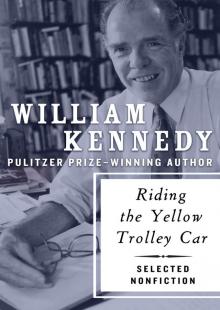 Riding the Yellow Trolley Car: Selected Nonfiction
Riding the Yellow Trolley Car: Selected Nonfiction Changó's Beads and Two-Tone Shoes
Changó's Beads and Two-Tone Shoes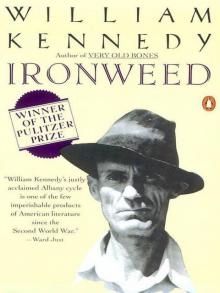 Ironweed
Ironweed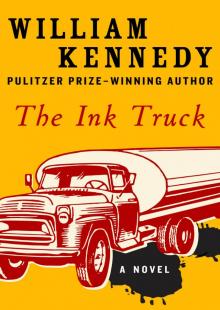 The Ink Truck
The Ink Truck Billy Phelan's Greatest Game
Billy Phelan's Greatest Game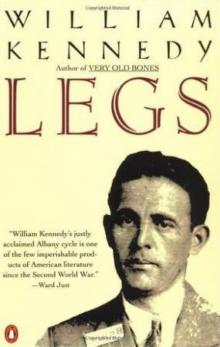 Legs
Legs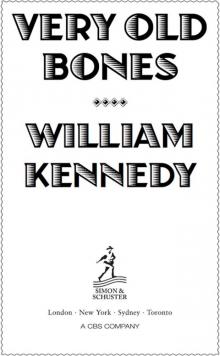 Very Old Bones
Very Old Bones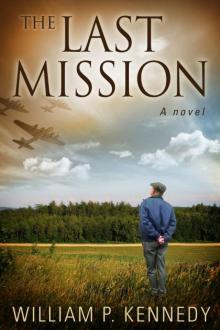 The Last Mission
The Last Mission The Flaming Corsage
The Flaming Corsage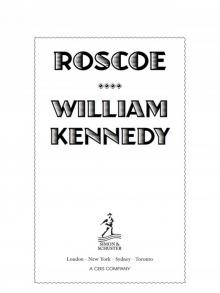 Roscoe
Roscoe Quinn's Book
Quinn's Book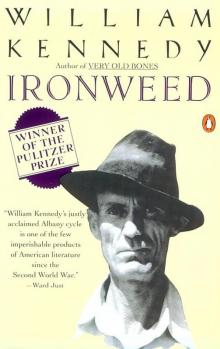 Ironweed (1984 Pulitzer Prize)
Ironweed (1984 Pulitzer Prize) Riding the Yellow Trolley Car
Riding the Yellow Trolley Car Legs - William Kennedy
Legs - William Kennedy